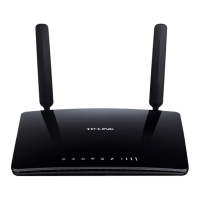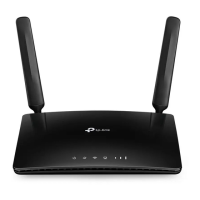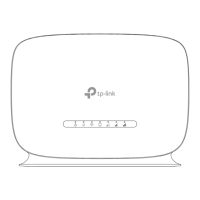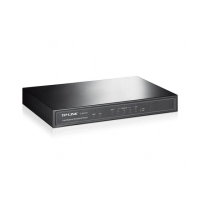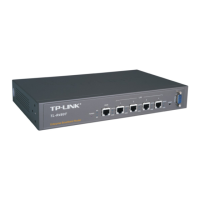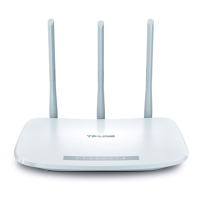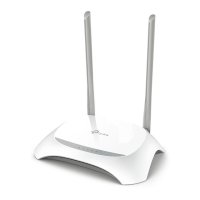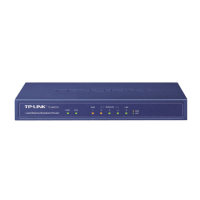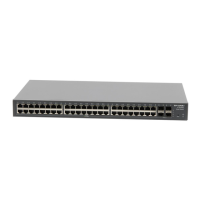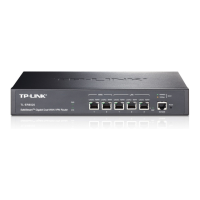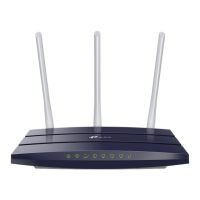Do you have a question about the TP-Link TL-MR6400 and is the answer not in the manual?
Legal notice regarding specifications, reproduction, and TP-LINK's registered trademarks.
Details compliance with FCC rules for Class B digital devices and radio frequency interference.
Warns about potential radio interference and lists country-specific usage restrictions.
Includes statements for Canadian, Korean, and other regional compliance requirements.
Crucial safety guidelines for product operation, handling, and maintenance.
Clarifies the meaning of symbols found on the product label, such as DC voltage and recycling.
Official statement declaring the product's conformity with relevant EU directives and standards.
Introduces the router, its features, and connectivity options like Wi-Fi and Ethernet.
Highlights key functionalities including network support, speeds, guest network, and IPv6.
Lists prerequisites like SIM card, PC, and installation environment guidelines for setup.
Step-by-step instructions for physically connecting the router for 3G/4G and standard modes.
Guides users through the initial configuration process for 3G/4G internet connectivity.
Guides users through the initial setup for using the router as a standard wireless access point.
Accessing the management interface and viewing the router's current operational status.
Configuring cellular connection parameters like APN, data limits, and PIN management.
Managing Wi-Fi network name, security, MAC filtering, and advanced wireless options.
Setting up a separate guest Wi-Fi network and configuring DHCP for local IP assignment.
Implementing firewall rules, VPN passthrough, parental controls, and access restrictions.
Utilizing tools for firmware upgrades, backups, diagnostics, and system logs.
Accessing the management interface and viewing the router's current operational status.
Configuring WAN connection types, LAN parameters, MAC cloning, and VLAN settings.
Managing Wi-Fi settings, security, and the guest network for wireless connectivity.
Configuring advanced security, DoS protection, and managing bandwidth for network traffic.
Setting up IPv6 connectivity and using system tools for time, diagnostics, and firmware management.
Addresses common issues like login page not appearing or inability to access the internet.
Instructions for restoring factory defaults and recovering lost management or wireless passwords.
Step-by-step guide to set up network adapter and TCP/IP settings on a Windows 7 computer.
Details hardware, wireless standards, frequency bands, and mobile network capabilities.
Information on operating temperature, humidity, and storage conditions for the device.
Provides definitions for technical terms and acronyms used throughout the manual.
| VPN server | PPTP VPN, IPSec VPN , OpenVPN |
|---|---|
| VPN support | PPTP, L2TP, IPSec |
| Ethernet LAN | Yes |
| Cabling technology | 10/100Base-T(X) |
| Networking standards | IEEE 802.11b, IEEE 802.11g, IEEE 802.11n, IEEE 802.3, IEEE 802.3u |
| Ethernet LAN data rates | 10, 100 Mbit/s |
| Ethernet LAN interface type | Fast Ethernet |
| Number of guest networks (2.4 GHz) | 1 |
| Frequency band | 2.4 GHz |
| xDSL connection | No |
| USB ports quantity | 0 |
| WLAN data transfer rates supported | 11, 54, 300 Mbit/s |
| Wi-Fi band | Single-band (2.4 GHz) |
| Wi-Fi standards | 802.11b, 802.11g, Wi-Fi 4 (802.11n) |
| Top Wi-Fi standard | Wi-Fi 4 (802.11n) |
| WLAN data transfer rate (max) | 300 Mbit/s |
| Product type | Tabletop router |
| Product color | Black |
| Output current | 1 A |
| Output voltage | 12 V |
| Power source type | DC |
| Antennas quantity | 4 |
| Cables included | LAN (RJ-45) |
| Firewall security | DoS, SPI Firewall, IP and MAC Address Binding |
| Security algorithms | 64-bit WEP, 128-bit WEP, WPA, WPA-PSK, WPA2, WPA2-PSK |
| 4G standard | LTE |
| 2G standards | EDGE, GPRS, GSM |
| 3G standards | HSPA+, UMTS |
| 4G bands supported | 800, 900, 1800, 1900 MHz |
| GSM bands supported | 850, 900, 1800, 1900 MHz |
| UMTS bands supported | 900, 2100 MHz |
| Supported network protocols | IPv4, IPv6 |
| Certification | CE, FCC, RoHS |
| Mac operating systems supported | macOS |
| Windows operating systems supported | Windows 10, Windows 7, Windows 8, Windows 8.1, Windows 98SE, Windows NT, Windows Vista, Windows XP |
| Storage temperature (T-T) | -40 - 70 °C |
| Operating temperature (T-T) | 0 - 40 °C |
| Storage relative humidity (H-H) | 5 - 90 % |
| Operating relative humidity (H-H) | 10 - 90 % |
| WAN connection type | RJ-45 |
| Package depth | 223 mm |
| Package width | 307 mm |
| Package height | 70 mm |
| Package weight | 600 g |
| Harmonized System (HS) code | 85176990 |
| Depth | 141 mm |
|---|---|
| Width | 202 mm |
| Height | 33.5 mm |
| Weight | - g |
